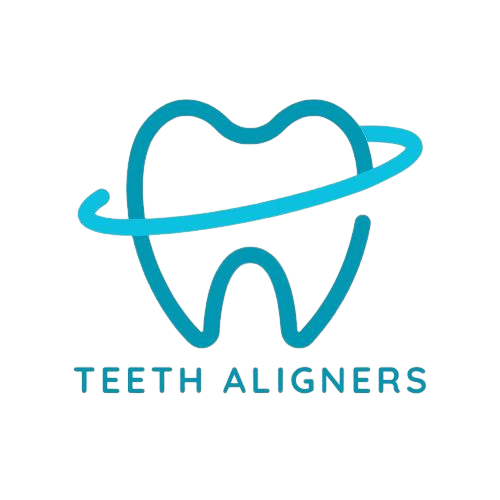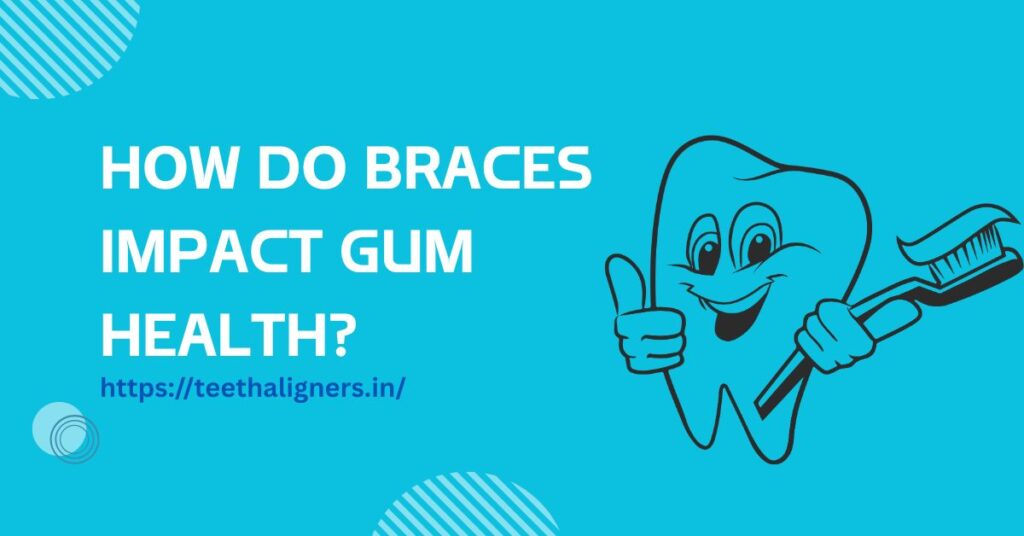When people think about orthodontic treatment, the main image that comes to mind is straight, even teeth and a more confident smile. But there’s another important factor often overlooked,the health of the gums.
Many patients ask: how do braces impact gum health? This is an essential question because gums are more than just soft tissue surrounding the teeth. They act as protectors, keeping the teeth stable and shielding the deeper bone structures from bacteria.
During orthodontic care, gums face new challenges, some temporary and some long-term. Understanding these changes helps patients protect their oral health while moving toward a straighter smile.This article explores the relationship between orthodontic treatment and gum health.
We’ll look at the basics of gum function, the immediate changes after brackets and wires are applied, the risks of inflammation, and how long-term care influences the outcome. By the end, you’ll see why gum health deserves just as much attention as tooth alignment during treatment.
Table of Contents
ToggleUnderstanding the Basics of Gum Health
The gums, or gingiva, form the soft tissue foundation around the teeth. Their job is to act like a barrier, stopping harmful bacteria from penetrating deep into the roots and jawbone.
Healthy gums also support the teeth, keeping them stable when biting and chewing. They are naturally pink in color, firm to the touch, and do not bleed easily.
When gums become unhealthy, the first signs are usually redness, tenderness, and bleeding during brushing or flossing. Left untreated, these signs can develop into gum disease, which can eventually damage the bone supporting the teeth.
During orthodontic treatment, gums face additional stress because the brackets and wires make it harder to clean thoroughly. This creates an environment where bacteria can build up more easily, which is why special attention must be given to gum care.
For some patients, options like Invisible corrective aligners can make oral hygiene easier since they can be removed for brushing and flossing, helping to keep the gums healthier during treatment.
What Happens to Gums When You Get Braces
The moment orthodontic appliances are applied, the mouth begins adjusting to a new reality. Brackets are bonded to the teeth, and wires are connected to apply pressure. This pressure is what moves teeth into new positions, but gums also feel its effects.
The tissues surrounding the teeth respond by stretching and compressing as the teeth begin shifting. This can cause mild swelling and soreness.
For most patients, this stage is temporary, lasting a few days to a few weeks. The gums usually settle as the mouth adjusts to the new pressure and structure.
Short-Term Gum Sensitivity
During the first phase of orthodontic treatment, gums often feel tender or sore. The brackets and wires may rub against the inside of the cheeks and the edges of the gums, causing irritation.
Patients may notice that their gums look slightly redder than usual or feel more sensitive when brushing. This stage can be uncomfortable, but it is part of the normal adjustment process.
Simple steps help reduce this early sensitivity. Saltwater rinses can soothe inflamed gums, while orthodontic wax can cover sharp edges of wires or brackets. Within a few weeks, most patients find that their gums adapt and the discomfort fades, allowing them to continue treatment with less irritation.
Braces and Gum Inflammation
One of the biggest challenges during orthodontic treatment is maintaining proper oral hygiene. Food particles can easily get caught between wires, around brackets, and near the gum line. When these particles are not removed, they mix with bacteria to form plaque.
Plaque is sticky and clings tightly to the teeth, irritating the gums.The earliest stage of gum inflammation is gingivitis. This condition causes gums to swell, turn red, and bleed when brushed.
Although gingivitis is reversible with improved cleaning, if ignored, it can lead to more advanced gum disease, known as periodontitis. Periodontitis can damage the bone that supports the teeth, leading to serious dental problems.
Orthodontic patients must therefore take extra steps to keep plaque under control. Brushing alone may not be enough,special cleaning tools and professional care become critical in protecting gum health.
The Importance of Oral Hygiene with Braces
Oral hygiene is the single most important factor in maintaining healthy gums during orthodontic treatment. Appliances like brackets and wires create more surfaces where plaque can accumulate. Without consistent cleaning, gums quickly become inflamed.
Patients are often advised to brush at least twice a day, using gentle circular motions to reach both the gum line and the area around each bracket.
A toothbrush with a smaller head can make it easier to clean tight spaces. Interdental brushes are helpful for removing plaque between wires, and water flossers provide a simple way to flush out trapped food particles.
Regular professional cleanings also play a vital role. Even with excellent at-home care, some plaque hardens into tartar, which cannot be removed by brushing alone.
Dental professionals use special tools to clean away tartar, reducing the risk of gum problems. By combining daily hygiene with professional support, patients can keep their gums healthy throughout orthodontic treatment.
Long-Term Effects of Braces on Gum Health
The long-term impact of orthodontic appliances on gums depends on patient habits and dental care. If hygiene is neglected, gums may recede over time.
Gum recession exposes the roots of teeth, making them more sensitive and vulnerable to decay. In more severe cases, untreated gum disease can damage the bone supporting the teeth, threatening their stability.
However, there is also a positive side. Once teeth are properly aligned, it becomes much easier to brush and floss effectively. Crooked teeth often create tight spaces that trap food and bacteria, making cleaning difficult.
By straightening the teeth, orthodontic treatment reduces these problem areas. This means that after treatment, patients often find it easier to maintain healthy gums and prevent future gum disease.
In the long run, orthodontic treatment can improve both the appearance of the smile and the health of the gums, provided that proper care is taken during the process.

How Dentists Monitor Gum Health During Orthodontic Treatment
Gum health is carefully monitored by dental professionals throughout orthodontic treatment. At each adjustment visit, orthodontists check for signs of inflammation, swelling, or bleeding.
If gum issues are noticed, they may recommend additional cleanings or suggest specific oral care routines.Scaling and polishing are common procedures used to remove plaque and tartar buildup that regular brushing cannot address.
In cases where gums are especially inflamed, dentists may adjust the orthodontic appliance to reduce pressure or irritation. This close monitoring helps patients stay on track with their treatment while keeping their gums healthy.
Preventive Tips for Healthy Gums with Braces
Protecting gums during orthodontic treatment requires daily effort and consistent habits. Patients should brush carefully after every meal, paying close attention to the gum line.
Flossing with a threader or using a water flosser helps remove plaque between teeth where a regular toothbrush cannot reach. Antibacterial mouthwashes can also reduce the amount of bacteria that cause gum disease.
Diet plays a role too. Sticky, sugary foods increase plaque buildup and cling to brackets and wires, raising the risk of gum inflammation. Choosing healthier snacks like fresh fruits and rinsing with water after meals helps reduce these risks.Regular dental visits provide an extra layer of protection.
Professional cleanings, along with routine check-ups, ensure that any problems are caught early before they develop into serious conditions. By combining good habits with professional care, patients can keep their gums strong throughout treatment.
Case Example: Patients in South Delhi
Lifestyle and local habits can influence gum health during orthodontic treatment. For example, patients in South Delhi often enjoy diets rich in spices, sweets, and sticky foods that can easily cling to wires and brackets.
These foods may increase the risk of gum inflammation if not cleaned away properly.Additionally, environmental factors like pollution and high stress levels may slow the body’s ability to heal, making gums more vulnerable to infections.
This means patients in South Delhi may need extra guidance and support to maintain their gum health during orthodontic treatment. With proper care and regular dental visits, however, these challenges can be managed effectively.
Role of Orthodontic Clinics in Patient Education
Orthodontic clinics play a crucial role in helping patients protect their gums during treatment. Clinics today do more than provide appliances, they also teach patients how to care for their mouths.
Practices such as Teeth Aligners in India guide patients on brushing techniques, flossing methods, and food choices that support gum health.
Whether a patient chooses Ceramic braces or aligners, these instructions play a vital role in preventing gum problems. By offering practical education, clinics empower patients to take responsibility for their oral care.
When patients understand how gums respond to treatment and learn the right techniques, they are more likely to maintain healthy gums and achieve the best results. This partnership between clinic and patient ensures that both teeth and gums benefit from orthodontic treatment.
Conclusion
Orthodontic treatment changes more than the position of teeth,it also has a significant impact on gum health. From the early soreness and sensitivity to the risks of inflammation and long-term effects, the gums respond to every stage of treatment.
The good news is that these challenges can be managed with consistent oral care, regular dental visits, and guidance from professionals.Healthy gums are essential for stable, long-lasting results.
Patients who dedicate time to brushing, flossing, and professional cleanings during treatment are rewarded with stronger gums and a brighter smile. By focusing on gum care as much as alignment, patients set themselves up for success well beyond the end of treatment.

